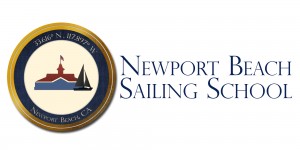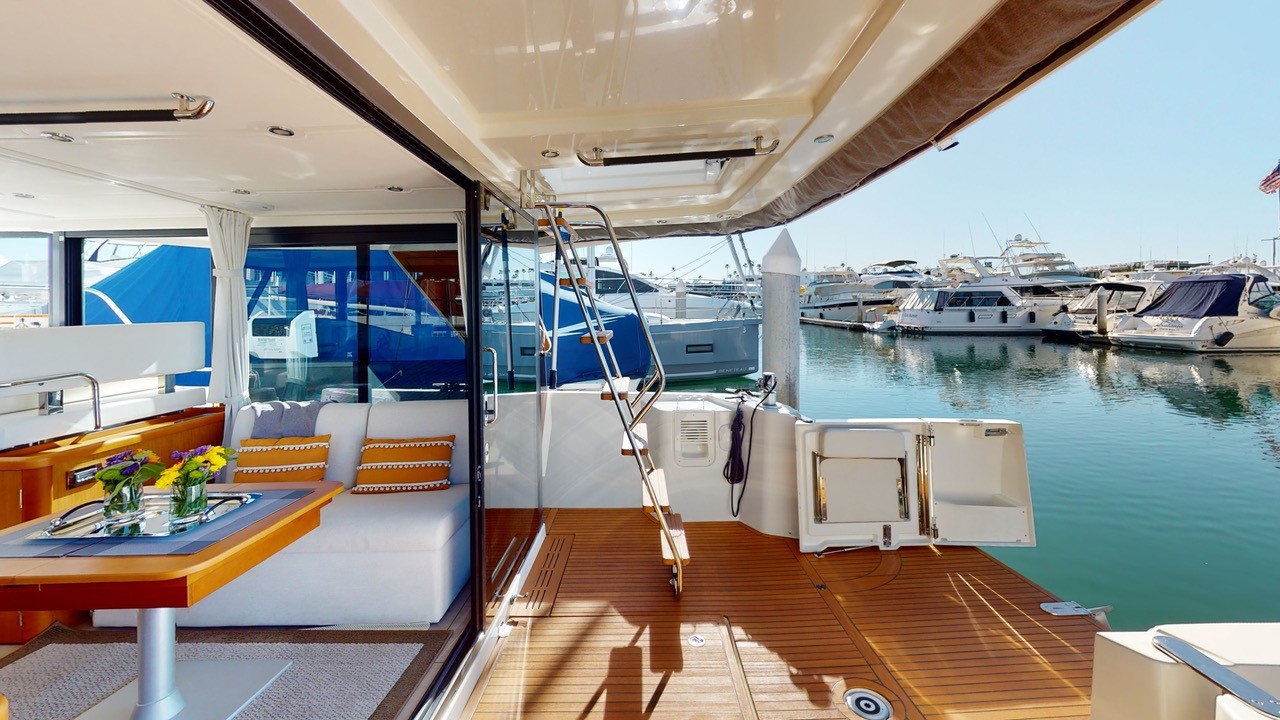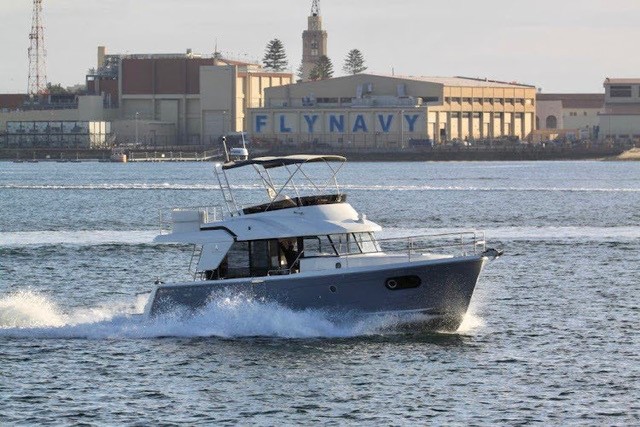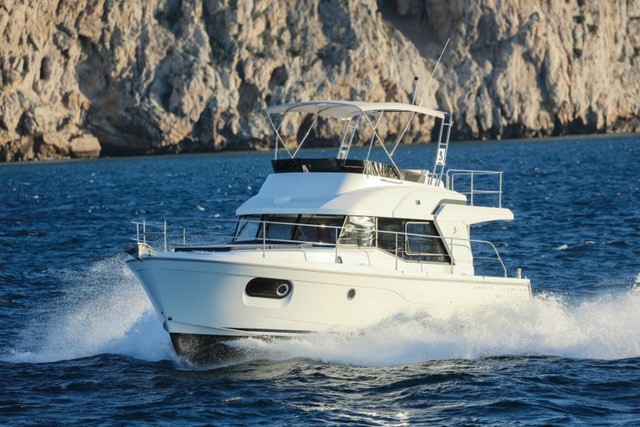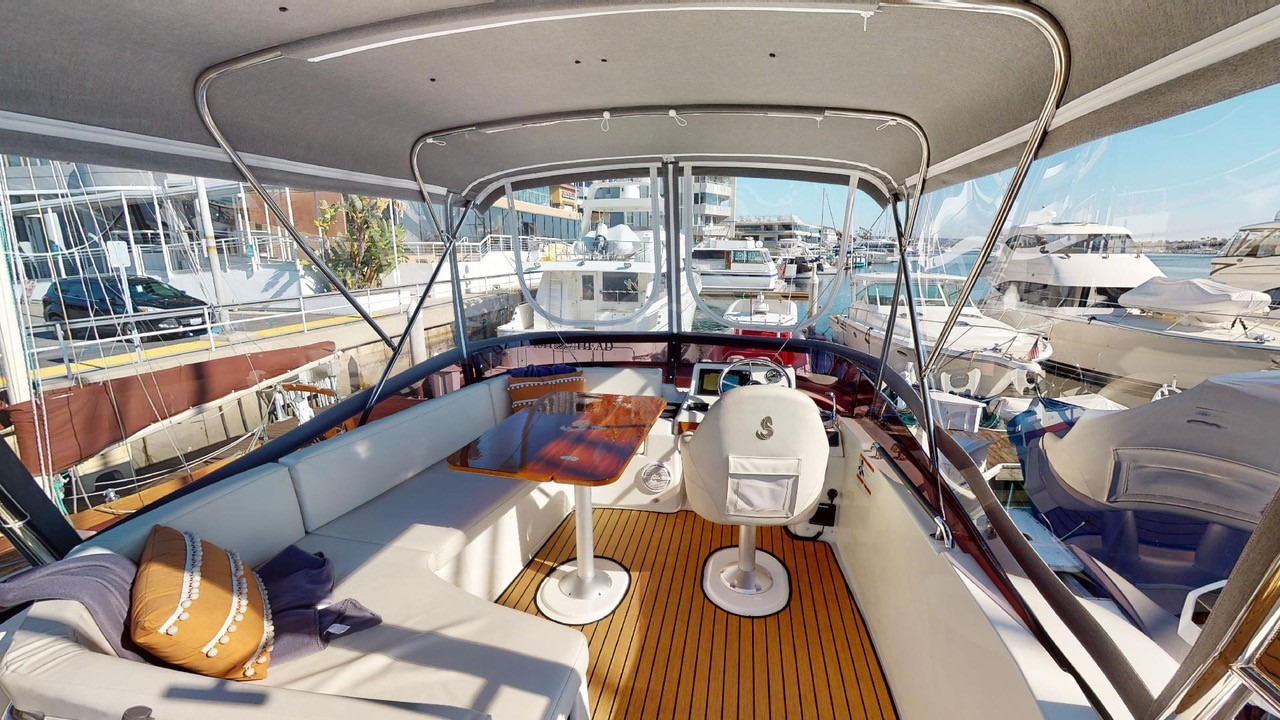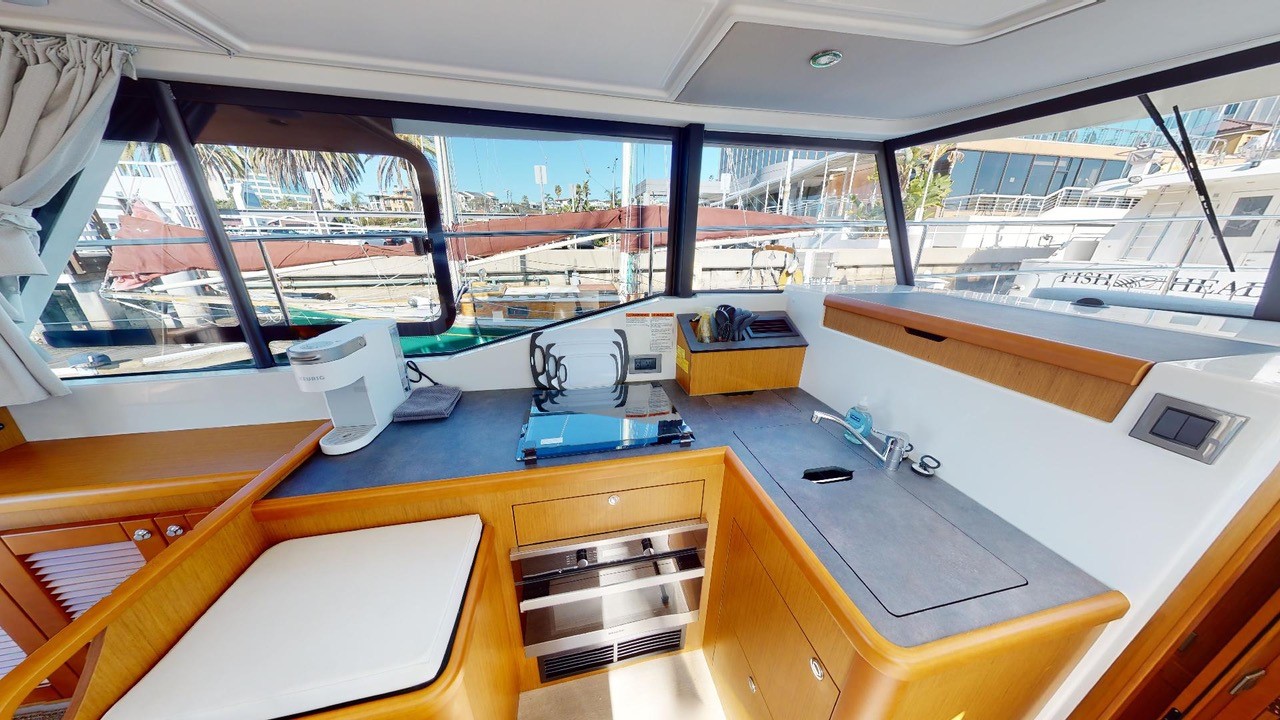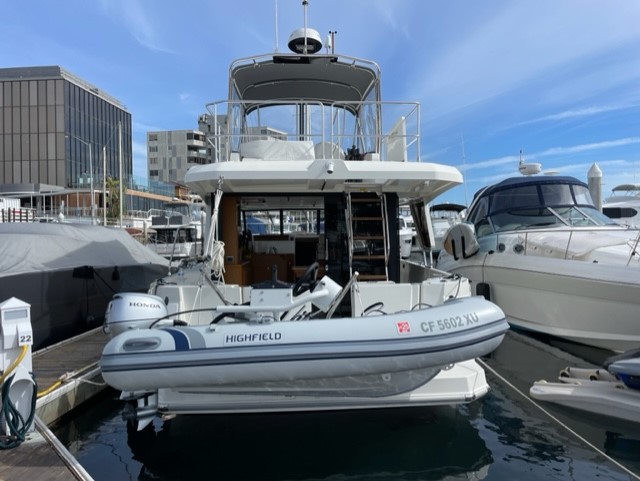Powerboat Bareboat Cruising
2-Days / 1-Night course on a newer Beneteau Swift Trawler 35
Course Price and scheduling for 2 days / 1 night
Group Course
Total of three students–You and two other students, who we match you up with.
Private Course
A private course for you and 1, 2 or 3 other people you know, based on your schedule.
Information about the Course
Powerboat Bareboat Cruising Overview
In this course, you will learn how to cruise a powerboat during a multi-day cruise to Catalina, in moderate wind and sea conditions. Learn about provisioning, boat systems, engines and transmission, coastal navigation, anchoring/mooring, docking, emergency operations, weather and more.
Full list of all 48 topics (knowledge and skills) plus knots – Powerboat Bareboat Cruising
Prerequisite – RPBA 1101 and Powerboat Night Clinic
Boat utilized and description – Newer Beneteau Swift Trawler 35
Trawlers have semi-displacement hulls that contribute to their performance and are designed to cut through high seas over long distances. Trawlers prompt you to explore far off islands with a powerful, reliable, efficient engine that also saves fuel. Trawlers have an excellent cruising range and can sail for hundreds of miles. The difference between the Swift Trawler and other trawlers: The Swift Trawler is fast – up to 20 knots.
Boat location – Balboa Marina, Newport Beach, CA
The boat will be docked at the Balboa Marina where our office is located. This marina has some of the best facilities and is one of the best destinations in Southern California. Some of the features that make this a great location are:
- Ample free parking
- Bathrooms and showers
- Two great restaurants with full bars – SOL Mexican Cocina & Tavern House Kitchen and Bar
- Starbucks across the street
- Gas station and minimart across the street
- Subway across the street
- Kayak and SUP Rentals a block away – Southwind Kayak Center
- Large grocery store, 3 blocks away – Pavilions
- John Wayne (SNA) Airport, 6 miles away.
- Several other great restaurants and bars within a mile
- Balboa Island within a mile
- Newport Pier and Balboa Pier within a mile and a half
- Art Museums of Laguna Beach within 10 miles
- Disneyland, 20 miles away
- Numerous hotels and resorts within just a few miles
- The famed Balboa Bay Club, where John Wayne use to hang out, less than a mile from the marina
What’s included –
- ASA 104 textbook “Bareboat Cruising Made Easy”
- Insurance, and safety gear (including life jackets)
- Mooring fees in Catalina
- Dinghy – 10’ with Honda 20HP outboard motor
- High quality bedding (duvet in Fall, Winter and Spring; cotton blanket in Summer) along with fitted sheets and your choice of pillows (exact selection based on availability)
- Bath towel, hand towel, beach towel, and dish towels
- Fully equipped galley with refrigerator, sink, oven, stove, pots, pans, dishes, silverware, cooking utensils, glasses, cups and coffee mugs. BBQ outside in the cockpit
- Hot water in the sinks and showers.
- Stereo with speakers inside the cabin and outside in the cockpit
- The boat is also stocked with 15 disposable items for your convenience. (Click here for a list)
- Cleaning and washing after your stay. It wouldn’t be a vacation if you had to clean up!
What’s not included –
- Fuel is billed at $6 p/gallon. The estimated cost of fuel is $325-$425 for the trip to Catalina and back but will vary depending on speed.
Cost Matrix to Reschedule a Class
Call us at (949) 209-9931 with any questions or to book by phone.
